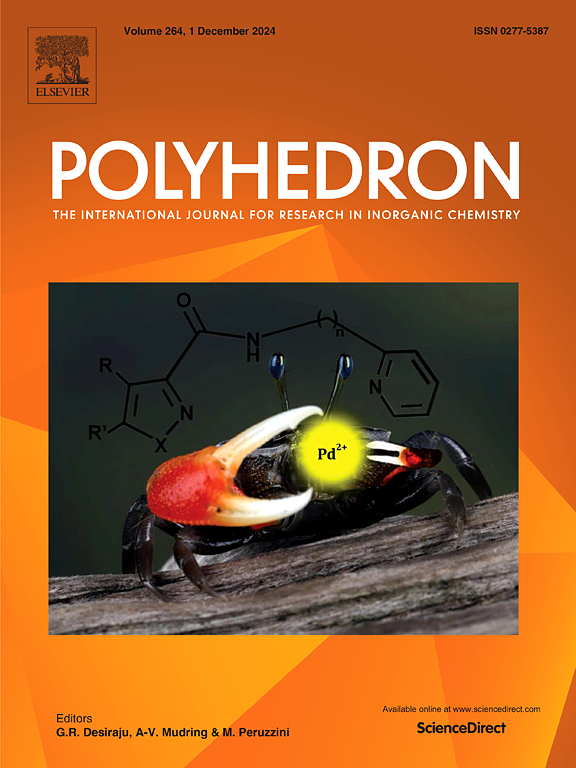Solvent-assisted control of the oxidation state in a dinuclear cobalt(II) complex with slow relaxation of the magnetization
IF 2.4
3区 化学
Q2 CHEMISTRY, INORGANIC & NUCLEAR
引用次数: 0
Abstract
The use of the reduced compartmental N2O4-donor ligand, H2Lr (= 2,2-dimethyl-1,3-propanediyl-bis(iminomethylene)-bis(6-ethoxyphenol)), containing an inner N2O2 and an outer O2O′2 cavity, with CoII in dimethylsulfoxide (dmso) gives rise to a p-nitrobenzoic −bridged cobalt(II) dimer: [(dmso)CoIILr(μ-RCO2)CoII(NCS)] (1) (RCO2H = p-nitrobenzoic acid). The reducing environment of the solvent dmso plays a crucial role in stabilizing cobalt(II) in the complex 1. The dimeric complex has been structurally characterized by single-crystal X-ray diffraction and various spectroscopic techniques. Magnetic DC and AC susceptibility measurements show very weak ferromagnetic interactions in the complex and a field-induced slow magnetization relaxation (SMR) at relatively low temperatures. For an applied DC field of 100 mT, the complex shows a slow relaxation process that follows Direct and Orbach mechanisms with A = 1.47(5) × 104 s−1 K−1, τ0 = 4.0(4) × 10−8 s and Ueff = 18(2) K.

求助全文
约1分钟内获得全文
求助全文
来源期刊

Polyhedron
化学-晶体学
CiteScore
4.90
自引率
7.70%
发文量
515
审稿时长
2 months
期刊介绍:
Polyhedron publishes original, fundamental, experimental and theoretical work of the highest quality in all the major areas of inorganic chemistry. This includes synthetic chemistry, coordination chemistry, organometallic chemistry, bioinorganic chemistry, and solid-state and materials chemistry.
Papers should be significant pieces of work, and all new compounds must be appropriately characterized. The inclusion of single-crystal X-ray structural data is strongly encouraged, but papers reporting only the X-ray structure determination of a single compound will usually not be considered. Papers on solid-state or materials chemistry will be expected to have a significant molecular chemistry component (such as the synthesis and characterization of the molecular precursors and/or a systematic study of the use of different precursors or reaction conditions) or demonstrate a cutting-edge application (for example inorganic materials for energy applications). Papers dealing only with stability constants are not considered.
 求助内容:
求助内容: 应助结果提醒方式:
应助结果提醒方式:


